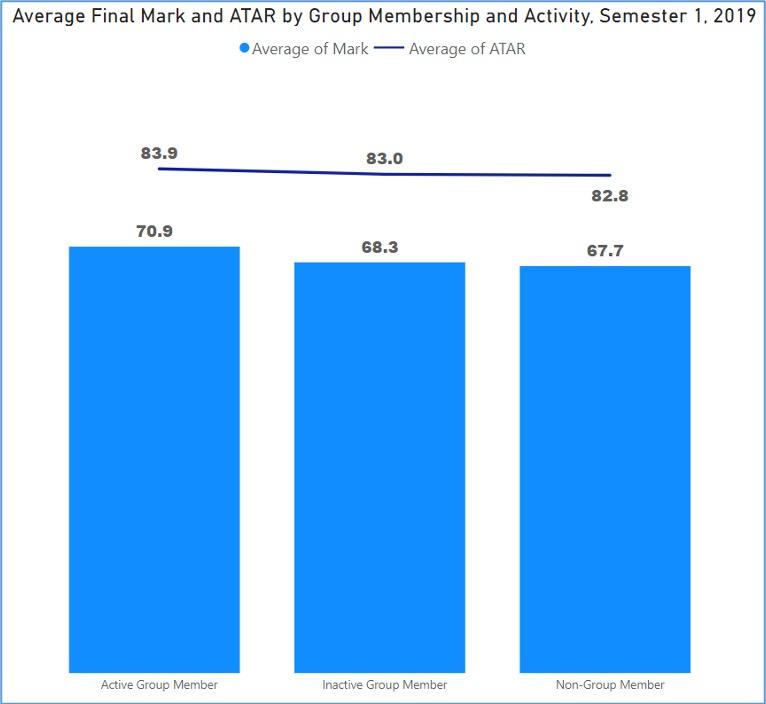Demonstrating the achievement benefits associated with group learning

Written by Daniel Barry
The benefits that students can derive by working together in groups are well documented. From increased individual achievement to enhanced communication and professional development skills, students with experience of Group Learning are likely to find themselves better equipped for whatever path they choose after graduation.
In a meta-analysis of 168 studies of undergraduate students Johnson et al. (2014) found collaborative learning resulted in greater knowledge acquisition, retention of material, and higher-order problem solving and reasoning abilities than students working alone. Since 80% of all employees work in group settings (Attle & Baker 2007), it’s understandable that employers value communication skills and the ability to work effectively within diverse groups (ABET 2016-2017; Finelli et al. 2011).
With this in mind, the Learning Analytics team delved into data from MyUni to seek evidence that students at the University of Adelaide achieved better marks when working in groups.
Enrolments in Semester 1, 2019 courses were categorised either as those who actively participated in groups within MyUni (14%), those who were members of groups but didn’t participate online (18%) and those that were not members of groups at all (68%). It was noted that the average high school ATAR score for these three groups was consistent enough (82.8-83.9, Figure 1) to suggest that none had a conspicuous advantage in ability.

Figure 1. Average Final Mark and ATAR by Group Membership and Activity, Semester 1, 2019.
The findings showed that active group participants achieved an average course mark that was over 3% higher than their peers who either weren’t group members or weren’t active within those groups (Figure 2). This was found in all faculties but most notably in Sciences (5.5% average mark improvement) and Professions (5.4%).

Figure 2. Average Mark by Group Activity, Semester 1, 2019.
The extra few percent resulted in a higher grade in a third of cases (n=3,042) with 441 enrolments (429 unique students) avoiding a potential fail. Seventy-one of these were first year students and previous analysis by the Learning Analytics team found the attrition rate among first year students that failed at least one course was seven times higher than that of those who passed all of theirs (17.5% compared to 2.5%). For 48 of the 71 first year students, the extra 3% helped them to avoid what would have been their only fail of the semester. If their rate of attrition now dropped from 17.5% to 2.5% we can project that an additional seven of these students were retained at the University as a result. To the University, the economic value in retaining those students is approximately $140,000 per year (~$20,000 per student).
For more information, please contact the Learning Analytics Team: learn_analytics@adelaide.edu.au
